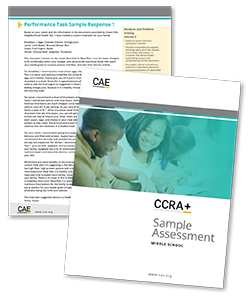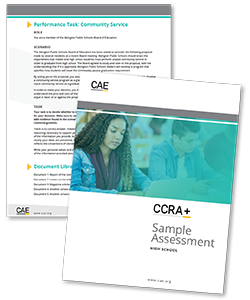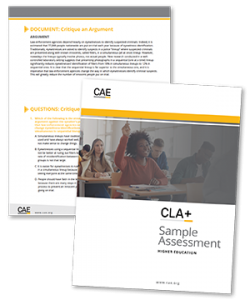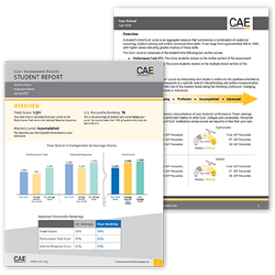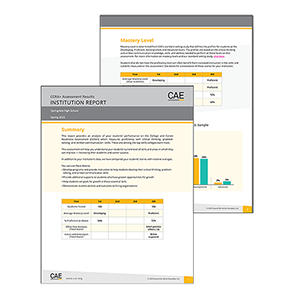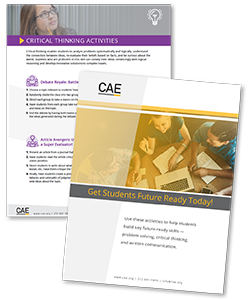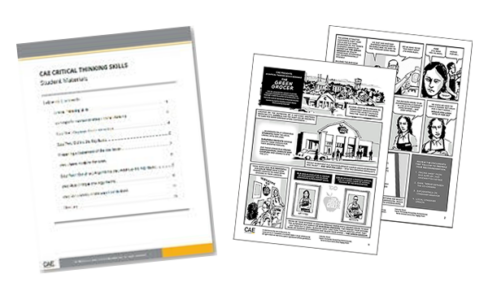 Assessing Collegiate Readiness
Assessing Collegiate Readiness
Measure the higher-order skills students need to succeed in secondary school, college, and careers with a performance-based collegiate readiness assessment.
Discover CAE’s K–12 and Higher Education collegiate readiness assessment tools. Then, let’s chat about how CAE can help you prepare students for college and/or career success.
Why Are Higher-Order Skills Important?
Higher-order skills are predictive of positive future outcomes for students.
- Students who perform better on CAE assessments tend to have higher cumulative GPAs than those who take traditional higher education entrance assessments (Zahner et al., 2016).
- Students who perform better on CAE’s Collegiate Learning Assessment (CLA+) are more likely to have positive outcomes after higher education, as measured by employment, salary, and enrollment in graduate school (Zahner, James, & Lehrfeld, 2022).
- Managers and advisors are more likely to give higher evaluations to students who perform well on the CLA+ (Zahner, James, & Lehrfeld, 2022).
Higher-order skills are in high-demand by employers:
- A global survey conducted by McKinsey in 2020 found that 90% of executives and managers either already saw skills gaps in their organizations or expected those gaps to develop soon.
- A six-year international research study conducted by CAE and the Organization for Economic Co-operation and Development (OECD) found that 60% of students who enroll in colleges and universities lack proficiency in higher-order skills. Additionally, the study revealed that 44% of students who graduate from these institutions still do not have the necessary skills.
- According to the World Economic Forum’s Future of Jobs Report 2020, critical thinking and problem-solving skills are considered the most crucial abilities that employers believe will gain more significance in the next five years. This has remained consistent since the first survey conducted in 2016. Additionally, these skills are also listed among the top 10 Skills of 2025, according to the same report.
How Collegiate Readiness Assessments Can Better Prepare Students for Post-Secondary Success
Preview a CLA+ Performance-Based Assessment
Get an inside look at CAE’s collegiate readiness assessments. Try the performance-based assessment and see how our tools help students develop their critical thinking, problem-solving, and written communication skills.
Take a Virtual Tour
Take a virtual tour of CCRA+ and CLA+ to see first-hand how CAE’s collegiate readiness assessment tools work. Then, contact us and get started building students’ higher-order skills today!



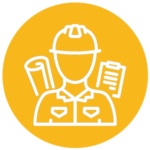

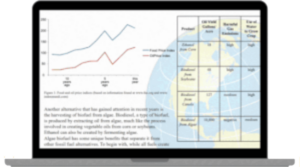
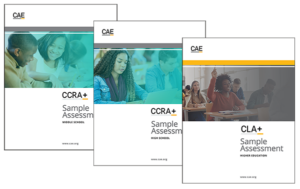 CAE collegiate readiness assessments go beyond multiple choice. They identify student strengths with higher-order skills, reveal opportunities for improvement, and provide reliable insights to students, educators, and institutions.
CAE collegiate readiness assessments go beyond multiple choice. They identify student strengths with higher-order skills, reveal opportunities for improvement, and provide reliable insights to students, educators, and institutions. 